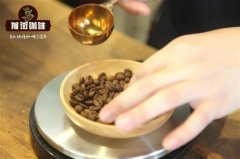Characteristics of growth process in Arabica Coffee planting area

Professional coffee knowledge exchange more coffee bean information please follow the coffee workshop (Wechat official account cafe_style)
Coffee tree is a genus of Rubiaceae in botany. The classification of coffee trees is very complex, there are many species, diversity and varieties. Different varieties of coffee beans have different tastes, but even the same varieties of coffee trees have their own unique flavor due to the influence of different soils and different climates.
Coffee production belt is between 25 degrees north latitude to 30 degrees south latitude, because coffee trees are vulnerable to frost, the tropics are the most suitable, the average annual temperature in this area is 15 ~ 25 °C, and 1500~2000mm abundant rainfall and well-drained slopes, coupled with the planting of other tall trees shading the wind is more suitable for coffee tree growth.
There are about 60 species of coffee plants in the world, and only 25 species are artificially cultivated for making coffee, of which three are the most important ones used as commercial coffee:
Arabica Coffee (Coffea arabica), Robasta (Coffea Robusta), Rabirika (Coffea liberica).
Arabica (Coffea arabica):
Arabica coffee features:
The oldest and most commercially practical coffee beans with a variety of complex species
Planting method:
They like mild days and cooler nights, and a climate that is too cold, too hot and too humid can be fatal to it.
Elaraby needs to plant coffee trees on sloping slopes more than 900m above sea level, so harvesting must be carried out manually, which is extremely difficult. However, due to the excellent aroma, balanced taste and low caffeine content (1.1-1.7%) of Elaraby coffee beans, although it is not easy to grow, it actually accounts for about 7580% of the total coffee planted.
Robasta (Coffea Robusta):
Characteristics:
The one with the highest yield has more personality in taste and is often used for blending or instant coffee.
Planting method:
It has strong resistance to tropical climate, high temperature, cold resistance, moisture resistance, drought resistance, and even mold infestation. It has strong adaptability, can grow very well on flat land, and grows very well at an altitude of 200-300 meters. Harvesting does not necessarily require manual work, but can be carried out entirely by vibration machines. As far as planting is concerned, Robasta has many advantages in growing coffee trees, but it is a pity that the coffee beans produced are bad in aroma, strong in bitterness, insufficient in acidity, and the caffeine content is double that of Arabica, which currently accounts for about 25-30% of the world's coffee production.
Rabirika (Coffea liberica):
Characteristics:
It's a bit of Robastar, and it usually doesn't taste very good.
Planting method:
Less affected by rainfall and temperature, planted below 200 meters above sea level, originated in Liberia, widely distributed, strong tolerance, but poor quality, strong bitterness, poor aroma, so it is not taken seriously, and the planting amount is the least.
Therefore, at present, Arabica and Robasta are the main types of coffee in the world.
Arabica coffee beans are green to light green in color, oval in shape and curved in grooves.
Robastian coffee beans are round in shape, brown in color and with straight grooves.
[Arabica Coffee Tree growth process] Seeds: that is, mature coffee bean sprouts: about 1-2 months after the coffee beans are dropped or artificially sown, the seedlings sprout in about 1-4 years. Fruit trees: trees that begin to blossom and bear fruit from about the fifth year: about 20-25 years [formation process of coffee fruit]
White flowers (spring): White flowers bloom three times a year from January to April. The flowers are white tubular with a faint fragrance of jasmine.
Green fruit (summer): White flowers will be withered in about a week, and small green fruits begin to appear.
Yellow fruit (autumn): after the green fruit is full for about 4 months, the pericarp begins to turn yellow
Red fruit (winter): yellow fruit after about a month, the pericarp gradually turn red, to crimson harvest, when the fruit size, color, shape are similar to cherries, so coffee fruit is also called Cherry, under the red peel, there will be a layer of sweet mucus wrapped coffee beans, under normal circumstances, each fruit will have two coffee beans.
Important Notice :
前街咖啡 FrontStreet Coffee has moved to new addredd:
FrontStreet Coffee Address: 315,Donghua East Road,GuangZhou
Tel:020 38364473
- Prev

Mocha Coffee making course what is the proportion of mocha coffee and milk?
Professional coffee knowledge exchange more information about coffee beans Please follow the coffee workshop (official Wechat account cafe_style) in Taiwan, coffee shops most commonly use Italian coffee machines to make coffee and extract small cups of espresso through high heat and high pressure. Generally speaking, a single espresso can brew about 30 milliliters of coffee and a double concentrated coffee using 7 to 10 grams of coffee powder.
- Next

Arabica coffee beans main flavor 100% Arabica coffee is good? what's so special?
Professional coffee knowledge exchange more coffee bean information Please follow the coffee workshop (Wechat official account cafe_style) when we drink coffee, mostly because of the refreshing demand for caffeine, we seldom pay attention to, or do not know the difference between coffee and beans, let alone that there will be a huge difference in flavor and taste. You can only hear it in advertisements.
Related
- Beginners will see the "Coffee pull flower" guide!
- What is the difference between ice blog purified milk and ordinary milk coffee?
- Why is the Philippines the largest producer of crops in Liberia?
- For coffee extraction, should the fine powder be retained?
- How does extracted espresso fill pressed powder? How much strength does it take to press the powder?
- How to make jasmine cold extract coffee? Is the jasmine + latte good?
- Will this little toy really make the coffee taste better? How does Lily Drip affect coffee extraction?
- Will the action of slapping the filter cup also affect coffee extraction?
- What's the difference between powder-to-water ratio and powder-to-liquid ratio?
- What is the Ethiopian local species? What does it have to do with Heirloom native species?

